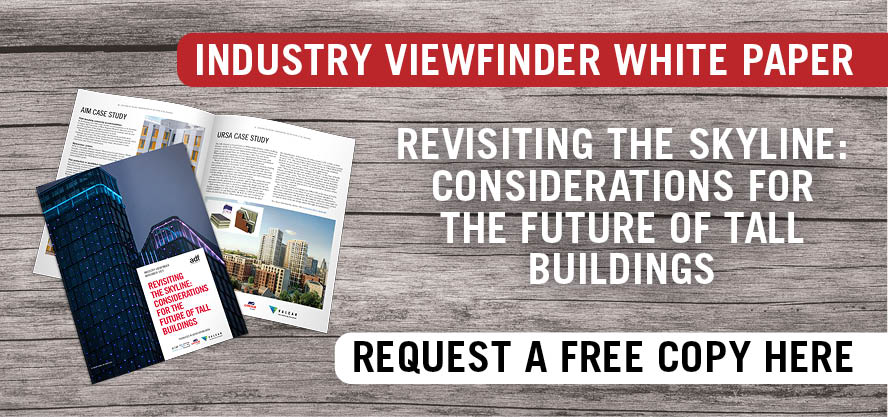External shading is helping to transform sustainable architecture by providing an eco-friendly alternative to air conditioning as our climate warms up.
All of the UK’s warmest years on record have happened over the last ten years, according to the Met Office, with more intense heatwaves.
And the trend is set to continue with heatwaves like we experienced in 2018 to occur every other year by 2050.
By 2070, our summers are expected to be 60 per cent drier and up to six degrees warmer than today.
The growing importance of shading in sustainable design
The consequences of these changes in our climate are the main reason external shading – particularly blinds – are becoming more and more integral to sustainable design and build.
At the same time, there is a growing cultural shift among consumers who are demanding eco-friendly, energy efficient homes to help reduce their home or office’s carbon footprint and energy bills.
As such, external shading is one of the must haves alongside heat pumps and solar panels to help control a building’s internal temperature where the difference between unbearable and comfortable is just five degrees.
Air conditioning units are not sustainable for the planet, contributing to around four per cent of the world’s greenhouse gas emissions. In addition, some of the refrigerants and Hydrofluorocarbons (HFCs) used in air conditioning units are big polluters and destroy the ozone.
External blinds not only look great from the outside but are highly effective at blocking solar glare whilst still allowing light into the building and residents to see the world outside.
The science behind solar control: How external blinds reduce energy demand
External shading helps architects meet Part O building regulations introduced two years ago to protect occupants of homes and offices from stifling conditions on hot days.
By effectively stopping offices and homes from overheating in the first place, there is no need to install expensive energy-greedy air conditioning units which only deal with the consequences of overheating, not the cause.
External shading uses a tiny amount of energy to operate. In contrast, a single air conditioning unit can double your energy use and therefore your electricity bills, which is financially perilous and unsustainable during times of market instability and rising energy prices.
External blinds can also be controlled remotely, allowing you to manage the amount of sun entering the building. So on cold, sunny days you can let in as much solar glare as you like into your home or office to reduce heating bills in the winter.
Case studies
Gloucester Cricket Ground
External shading experts at Kensington Blinds came to the rescue of flat residents overlooking Gloucester Country Cricket ground where inside temperatures regularly climbed to a suffocating 29°C degrees during the summer.
However, the residents didn’t want their wonderful view of the cricket ground in Bristol ruined.
Our experts solved the problem by installing Renson Fixscreen exterior blinds and, almost immediately, residents saw the temperature drop to a comfortable 22°C.
And the special weave of the blinds meant that residents could still watch their beloved cricket matches through the window on hot summer days whilst remaining cool.
Exterior blinds for a Passivhaus Home
A couple who built a Passivhaus in the Cotswolds asked our experts to help with their ‘boiling bedroom’.
Kensington Blinds installed four external blinds made from tough fibreglass fabrics and an aluminium frame, which was finished to match the house.
After the installation, the resident said:
“When the blinds are lowered the change is instant and transformative. If you put up the blind, the window board turns boiling hot, but when it’s down – even during 30°C weather outside – the temperature is still a really comfortable level indoors.
“It also creates a really interesting and lovely visual effect – like a textured painting on a canvas, when you’re looking out of the room onto the fields.”
Challenges and considerations in implementing external shading solutions
There are very few challenges to installing external shading in new houses and it is easy to retrofit to older properties depending on whether the building is listed.
However, when fitting external shading to offices or flats the biggest consideration is access.
Costs will increase because more specialised equipment is needed to reach the windows such as scaffolding or scissor lifts.
Although maintenance is minimal, external shading is always exposed to the rain, wind and of course, sun, which can cause wear and tear. This is more so in coastal areas where the salt in sea spray can cause materials to deteriorate more quickly. To counter this, using marine grade powdercoating and materials which do not rust – like aluminium – is recommended.
Future trends: Dynamic shading, smart glass, and automation
As consumer demand for sustainable homes increases, current trends are set to adapt and innovate rapidly.
Dynamic solar shading is one such innovation which uses an intelligent building control system to control external blinds, screens and shades.
The system uses real-time data from the weather and temperature to control shading so in winter, the system allows more solar glare to enter to heat the building and in summer, lowers the blinds to stop the building from overheating.
Smart glass is also set to become more popular in homes and offices and can be controlled by a switch, remote, or voice command to stop sunlight and heat entering buildings.
In addition, further innovations in automation of both external blinds and smart glass means homeowners and office building managers will be able to control the temperature inside remotely, schedule commands and integrate control with popular platforms.
Contact us
Kensington Blinds has many years of experience in reducing overheating in buildings and can help you choose the best product for your project.
If you’d like to talk through the options, our experts would love to tell you more about the projects we have worked on and how we can help.



